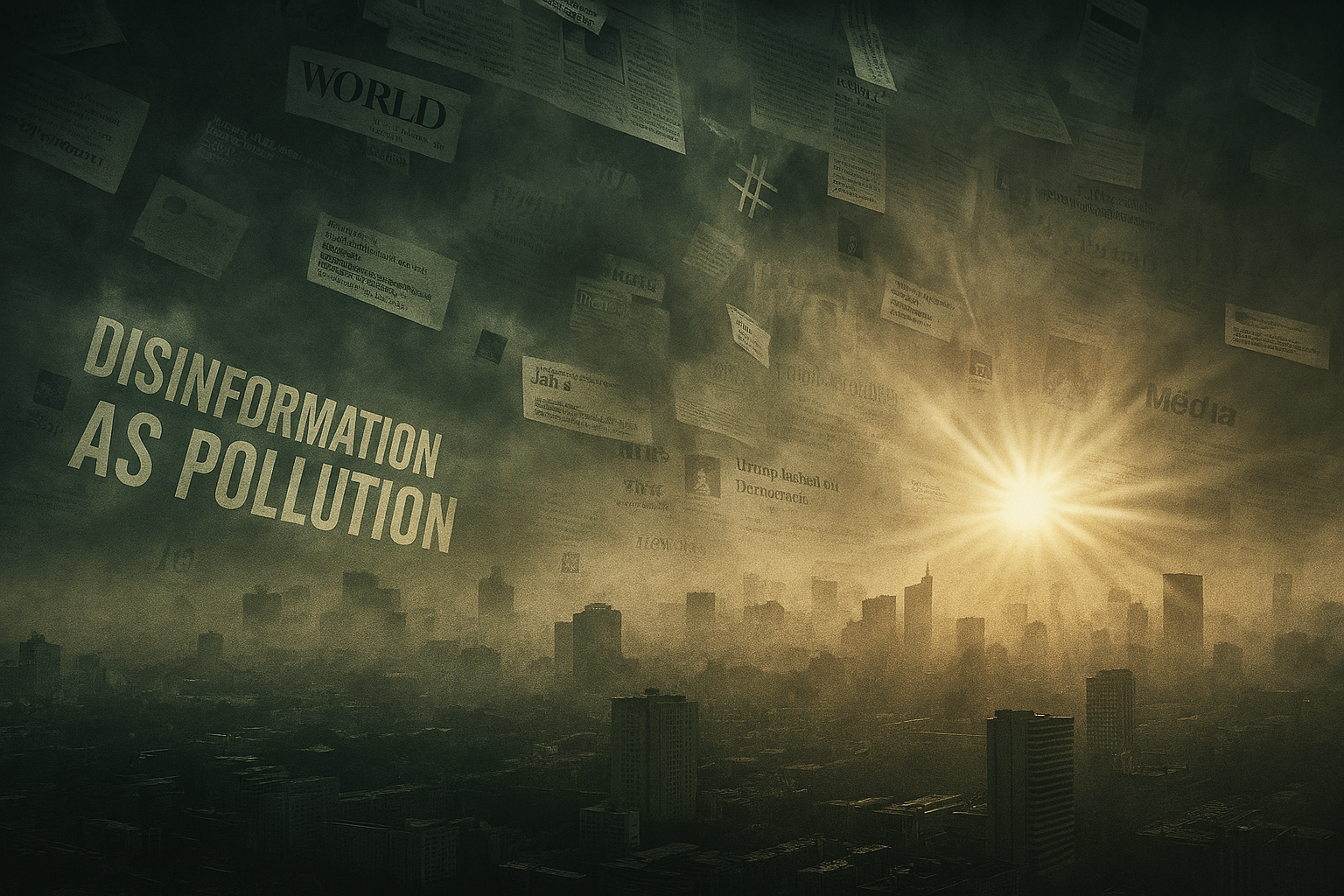Disinformation as Pollution: Clearing the Climate Narrative Smog

The air isn’t the only thing clouded. In the final week of COP30, as delegates debated fossil fuel phase‑outs and forest protections, another kind of pollution thickened the room: disinformation. It didn’t rise from smokestacks or tailpipes, but from headlines, hashtags, and policy drafts. And like smog, it obscures visibility, corrodes trust, and delays response.
The Invisible Pollutant
Disinformation behaves like particulate matter. It’s fine‑grained, hard to detect, and deeply inhaled. It settles into public discourse, distorting perception and paralyzing action. At COP30, ten nations endorsed a declaration to combat climate disinformation — a symbolic first step toward narrative cleanup. But the smog is thick, and the cleanup has only begun.
Sources of Narrative Smog
Much like industrial emissions, disinformation has traceable sources. Lobby‑backed campaigns reframe extraction as “transition.” Think tank reports launder biased metrics into mainstream coverage. Algorithms amplify outrage over evidence. And cherry‑picked data — stripped of context — becomes the exhaust of denial.
Why It Matters
When visibility is low, collisions happen. Policy stalls. Public trust erodes. Climate action becomes a foggy road with no signage. The damage isn’t just reputational — it’s existential. Every delay in mitigation, every diluted agreement, every false equivalence costs lives, ecosystems, and time we don’t have.
Clearing the Air
Just as we monitor PM2.5 and ozone, we must track narrative toxins. That means demanding transparency in sourcing, methodology, and incentives. It means favoring primary data over viral threads. And it means treating information integrity as a public health issue — because it is.
What You Can Do
Check provenance. Who authored the claim? What’s the data, the method, the motive? Favor studies, inventories, and direct sources. Share with context — not just headlines. And when in doubt, ask: is this clearing the air, or thickening the smog?
Bottom Line
Disinformation is pollution. It may not choke your lungs, but it chokes progress. At COP30, the world took its first official breath toward cleaner climate narratives. Let’s make sure it’s not the last.
